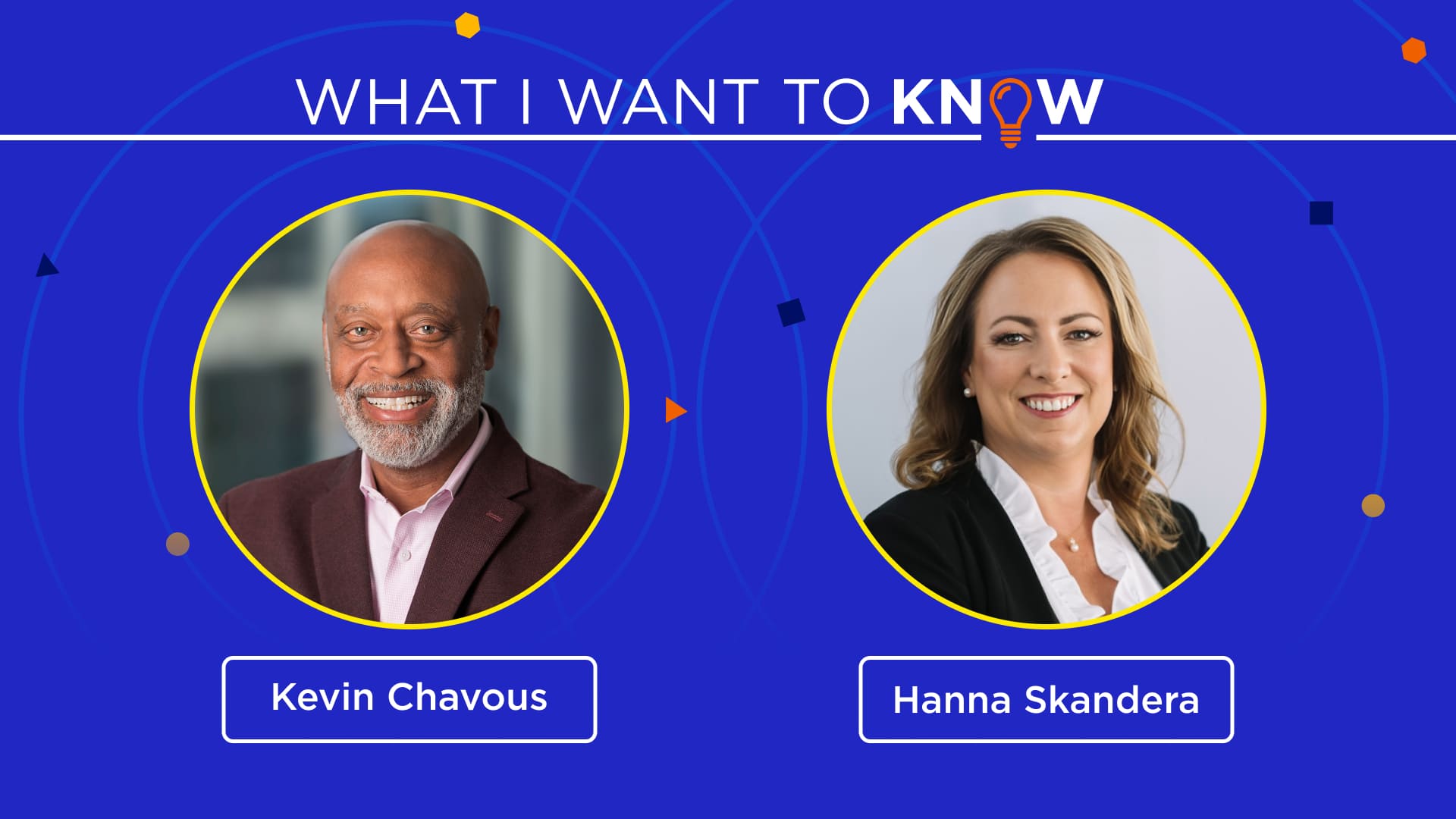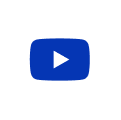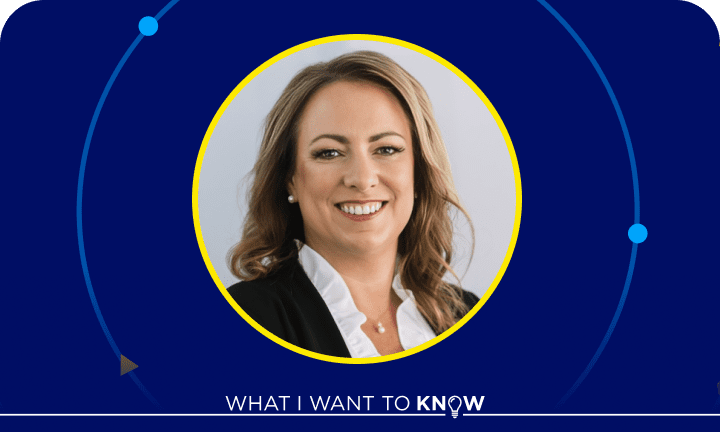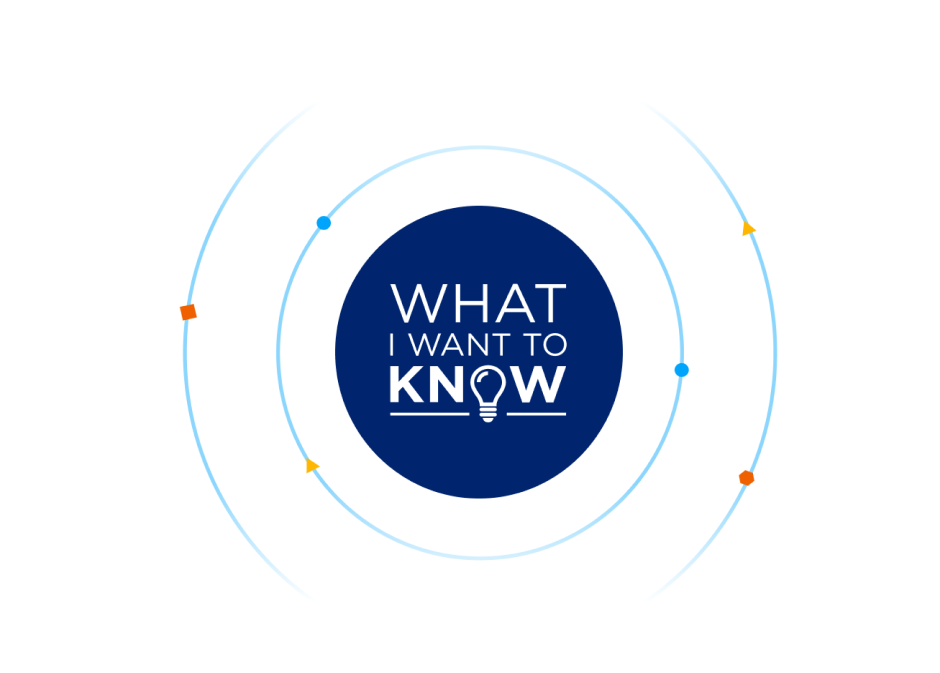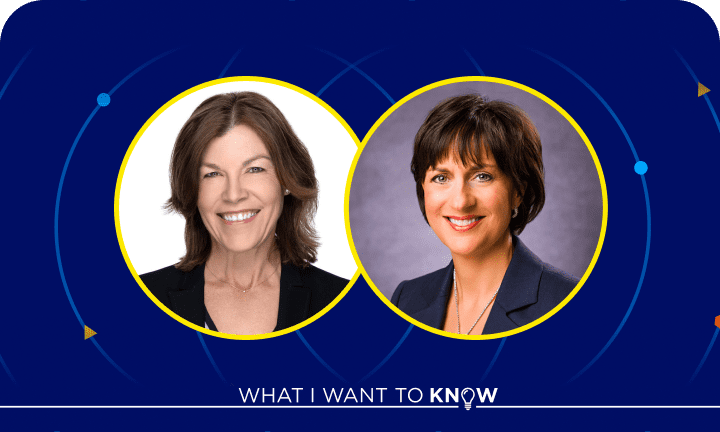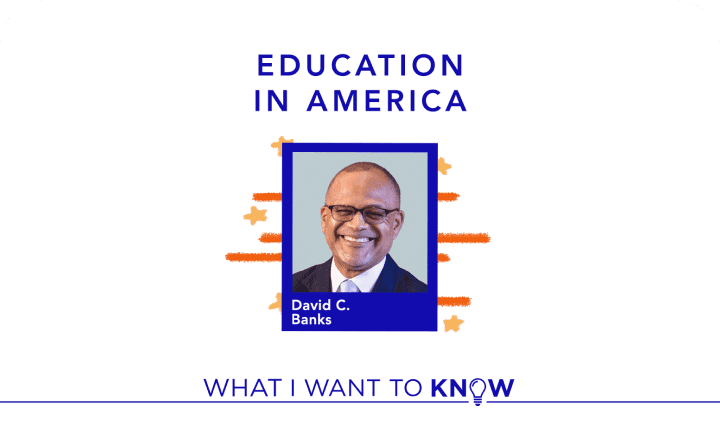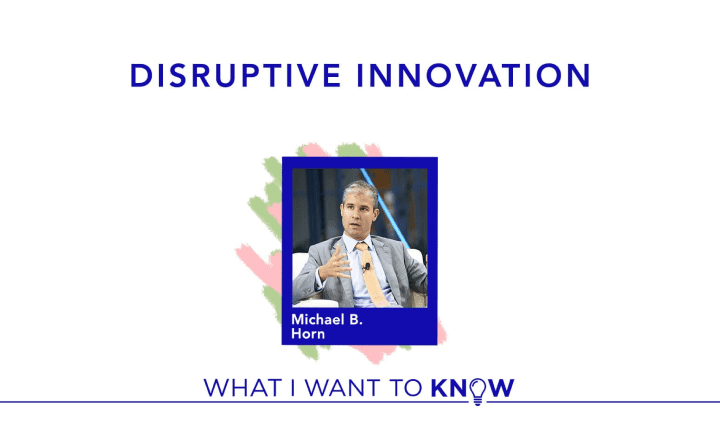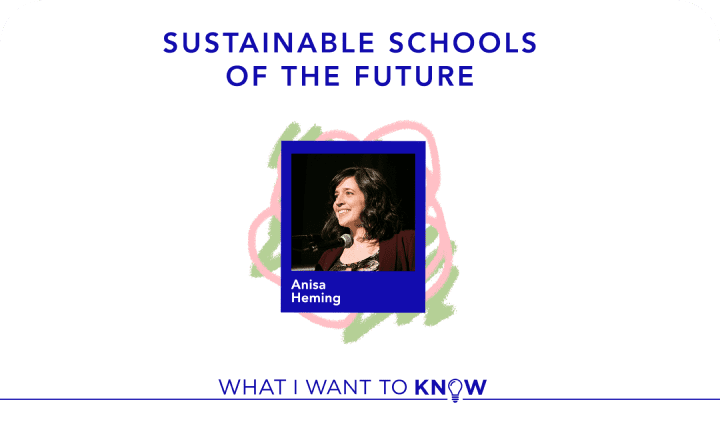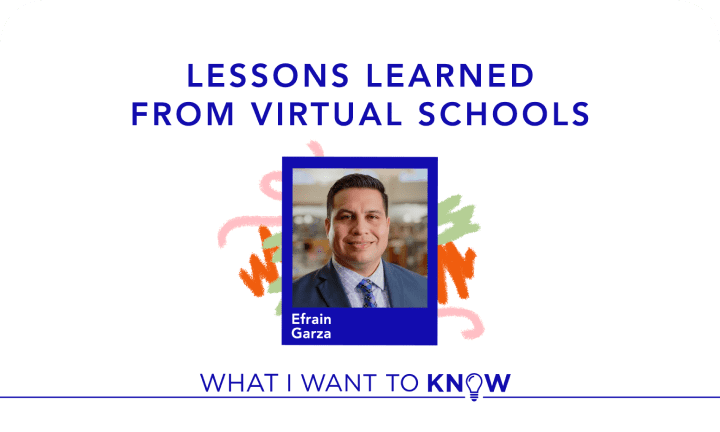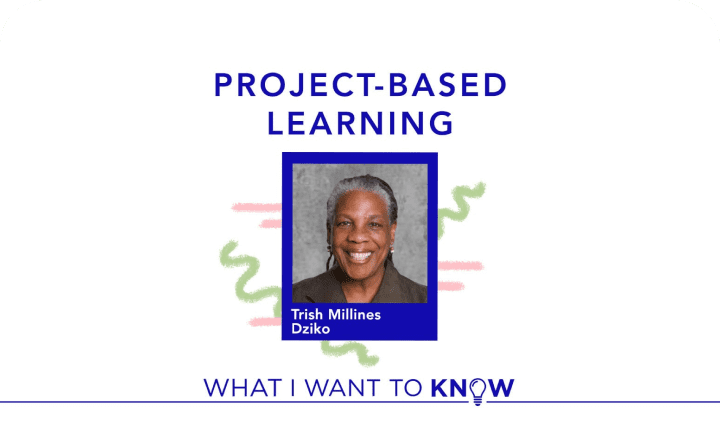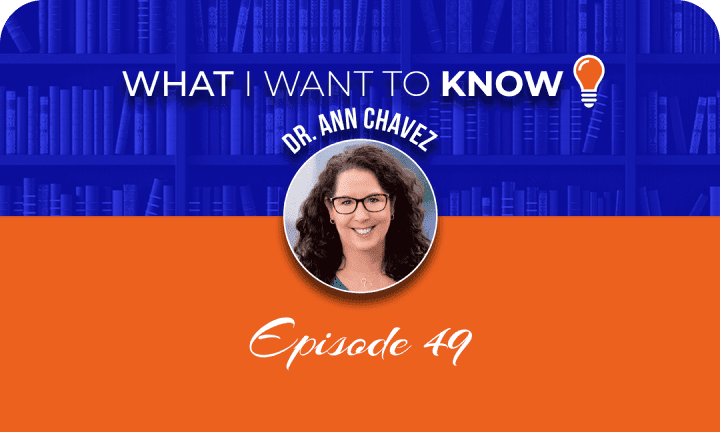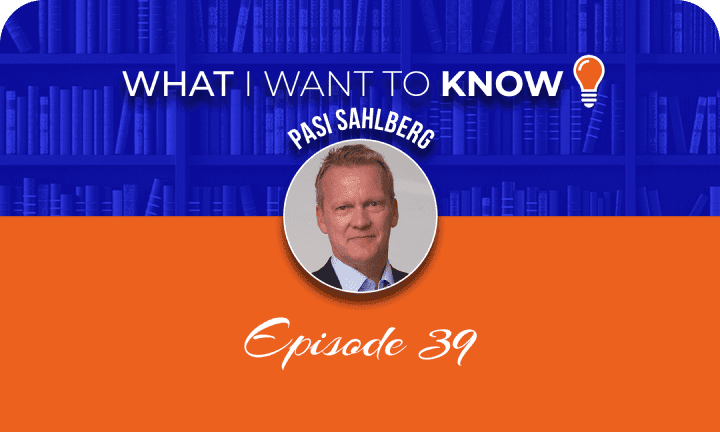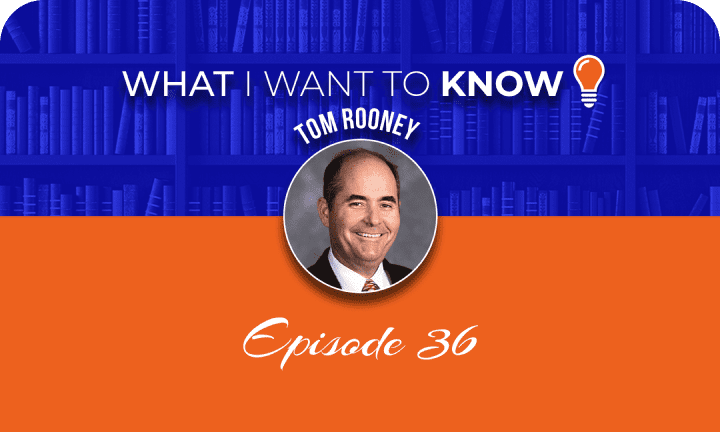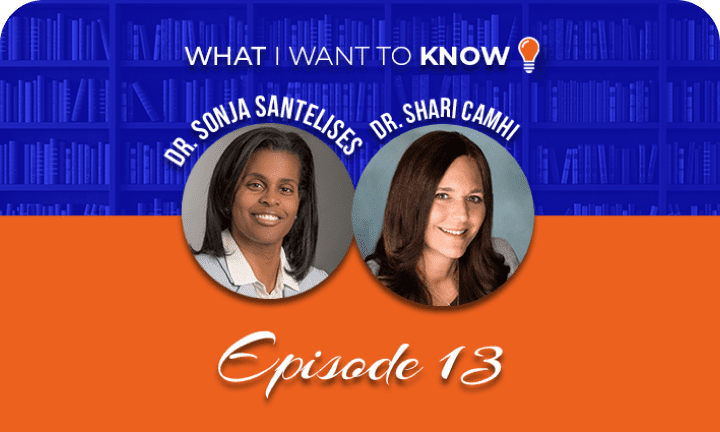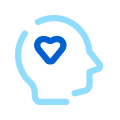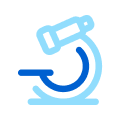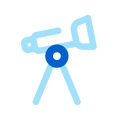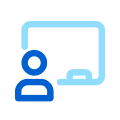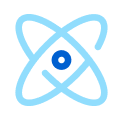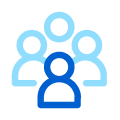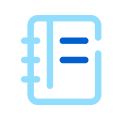April 3, 2024
EP. 148: What is the role of philanthropy in education?
We all know that philanthropy is essential in education. Many worthwhile organizations rely on the generosity of philanthropic groups who are determined to help kids and schools through their donations. However, the needs of schools have changed, particularly following the pandemic.
What is the role of philanthropy in education? How has education philanthropy changed in recent years? And where do we expect future philanthropy to focus their support for schools?
In this episode, Hanna Skandera joins Kevin to discuss the role of philanthropy in education.
Listen on: Apple Podcast, Spotify
Meet Hanna
Hanna Skandera is the president and CEO of the Daniels Fund, a private charitable foundation dedicated to making life better for the people of Colorado, New Mexico, Utah, and Wyoming through its grants program, scholarship program, and ethics initiative.
Previously, Hanna served as the secretary of education for New Mexico.
Hanna: When I think about philanthropy and its role and purpose, one of the opportunities in philanthropy is to be responsive, when something is happening, to innovate, be agile, and plant some seeds that might be able to grow more quickly outside of a traditional system to see if they have, you know, real legs, right? Like let’s be entrepreneurial.
Kevin: We all know that philanthropy is important in education. Many worthwhile organizations rely on the generosity of philanthropic groups who are determined to help kids and schools through their donations. That said, it is clear that the needs of schools have changed, particularly following the pandemic. How has education philanthropy changed in recent years? And where do we expect future philanthropy to focus their support for schools? This is “What I Want to Know,” and today I am joined by Hanna Skandera to find out.
Hanna Skandera is the President and CEO of the Daniels Fund, a private charitable foundation dedicated to making life better for the people of Colorado, New Mexico, Utah, and Wyoming through its grants programs, scholarship programs, and ethics initiatives. Previously, Hanna served as the Secretary of Education for the State of New Mexico. Hanna, welcome to the show.
Hanna: Thanks for having me, Kevin. It’s great to be here.
Kevin: There’s so much I want to unpack with you. You’ve had such a stellar career and such a commitment to kids, but I always like to go back to the beginning because as I’ve known you and known about you, I really don’t know much about your background. What drove you to have this interest in education and led you to some of the jobs that you’ve done over the past few years? Generally, when you’re young, some of this stuff sort of creeps in one way or another. I’d love to hear your story.
Hanna: Yeah. I think there are three things that stand out for me and, like, why education and why am I so passionate about it? Starting with, as you said, when I was younger, I actually, if I look at my education career, I was home educated, went to a small parochial school, and went to public and felt like I had, like, this menu of incredible opportunities that deeply influenced me, that kind of led into what I’ll call my paradigm about education, and that is that it’s fundamentally game changing, that the opportunities that we give young people can change the trajectory of their lives.
And somewhere in the middle of that journey, myself, I started a nonprofit when I was a senior in high school, was in public schools all over California. It was a peer education program. And while I was in these classrooms, I think just that deep passion and commitment to I want to be a part of young people’s lives and a part of in a way that I hope makes a big difference and gives them opportunities and prepares the next generation to be leaders and game changers and make history.
Kevin: Wow.
Hanna: And I don’t want to promise that I’ve done that, but that was the passion behind my love for education and my conviction of how important it is.
Kevin: What’s fascinating about that is, and I even think about young kids today, I tell young people explore and expand your horizons as much as possible, expose yourself to as many different things as possible because once that passion is found, you know it. And obviously, you knew it at a young age.
Hanna: Yep. I think that is so right. And sometimes I think, and I know we’ll probably get into this a little bit, Kevin, but we demand that people excel at a singular thing so early in their age, whether it’s sports, which I’m a huge fan of, youth sports and played them myself and played through college. But I think there’s a danger when we demand that we focus too early and don’t allow that, like, rich exploration and discovery for each young person in unique ways that suit them.
Kevin: Yeah. And also, I think that, you know, you have various times and stages in your life, your career, and you change, you grow hopefully, and your interests change and grow. If you have that core passion around one thing, even if you do that, like, the work we both have done in education, has taken on different dimensions over time.
I’ll never forget, candidly, I don’t know what you made me think about this. When I was in public office in D.C. and some reporter wrote an op-ed about me and said, “Kevin Chavous,” the headline, “Kevin Chavous doesn’t know what he wants to be when he grows up.” Because she was writing on the heels of my first book coming out. He wants to be an author. He wants to be mayor. He wants to be an education activist. He wants to be a lawyer.
And, you know, when she called about it and said, “I know you’re mad at me,” I said, “No, actually, I’m happy because I don’t think we should be stuck in one thing if we feel there are a lot of things that we have interest in.” And today’s young people, Hanna, as I see it, they have an opportunity to expose themselves to so many different things. In ways that we couldn’t, the world comes to them.
Hanna: Yeah. There is so much, I mean, whether it’s technology creating a platform, if you will, for venues of opportunity and different ways to access education, frankly. It’s unbelievable. And I mean, to me, now more than ever, and this is where I get really excited about choice and opportunities, that for families, because there are more choices on the table than we’ve had, in my opinion, and maybe ever in our history in the United States, I actually believe choice is being redefined, and I actually believe public, the public component of public education is being redefined. I think, you know, historically at different points in our country’s history, education has been used as a piece. And I think we’re entering a new era around what is the purpose of education in America today.
Kevin: Yeah. And, you know, that’s a good segue because I obviously want to talk to you about your work with the Daniels Fund and philanthropy and education generally. But since we’re talking about literally the state of education, what’s your assessment of where we are now as opposed to where we need to be with regard to education in America?
Hanna: Yeah. Super high, super low. Do I get to choose both? I just would say, on the one hand, I think we have a crisis on our hands. If you look at how our students, how we came out of the pandemic, you know, we say we had so much learning loss, but we often forget that, and I’m generally speaking across the country, there are exceptions everywhere and great things to champion. But if we look across the country, I think we had a travesty take place. And now we’re in a crisis mode, and we worry about, you know, since COVID, but I want to just say we were not at a great place before COVID.
Kevin: Right. Exactly. Exactly.
Hanna: The starting point wasn’t the right starting point. And so that’s where the crisis comes for me. In the same breath, I am incredibly optimistic, Kevin. I feel like for the first time, and it’s not just a feeling, there’s great data, there’s great data that tells us we’re in crises, and there’s great data that says parents, 70% of them, in fact, just recently, said, “We want choice for our kids. We want to find the best option for them.” And they’re looking for that.
And I think there is . . . we cannot capture the power of parent and student advocacy for themselves and their families and the opportunities that, you know, I said, I think the public side is being redefined. I also think choice is being redefined. We used to think it was private school or charter school, and that was kind of like the non-traditional public and the private system. And now there’s everything from pods to, I mean, I can’t even think of all the ideas that are emerging that are just . . . I mean, and you’ve been a part of much of this, and that, that is not a crisis. That is an opportunity.
Kevin: It’s a huge opportunity. And a lot of the challenges that you rightly pointed out were in existence before COVID, a lot of those challenges became more visible as a result of COVID because parents were able to see and peer into America’s classrooms. And as a result, you have this explosion of parent interests and involvement. And then at the same time, we’ve got this explosion of technology through artificial intelligence and all the advances, you know, drone technology, all this stuff. But at some point, the traditional school district, and you were Secretary of Education in New Mexico, there has to be an embracing of . . .
Hanna: Agreed.
Hanna: . . . what’s possible, because there are a lot of good people in all of these state education offices, but many of them are sort of just, one, there’s fear. And look, we all, a lot of us have fear about AI and the like. But then there’s also like this thing, we’ve always done it that way. How do we break through the logjam, or will the forces of what’s around us just bust it all open?
Hanna: Yeah. I hope it’s both/and, not either/or. And what I mean by that is I do think the external forces, when 70% of parents, I think for the first time in our history, are saying, “We are going to actively pursue and desire a choice other than what is our neighborhood choice right now. It’s not working for us in some way, shape, or form,” that’s pretty darn significant.
Kevin: Yes.
Hanna: So that’s an external. And you could say it’s deeply internal, but we’ll say it’s an external force on what we’ve known as the traditional system. And my hope is that the traditional system, and as you pointed out, I’ve spent over 20 years in leadership roles advocating for serving our students better in the public system. But it’s time. We’ve got to respond. And I would say I think if we don’t, I don’t think the parent and family desires are going to change.
Kevin: Yeah. No.
Hanna: And so change is hard. It’s scary. But we also, what’s at risk if we don’t? I think we have to ask that question. And to me, there’s the imperative of preparing the next generation to lead in this country, to be game changers in this country, and to put forth a vision for this country that it desperately needs as we move forward into this, you know, next wave. And that to me is a clarion call for being responsive.
Kevin: I wanted to ask you one other thing and another topic, before we get to the philanthropy question. You were Secretary of Education in New Mexico. You dealt quite a bit with the Native American communities. Talk a little bit about, you know, those challenges and opportunities because we see today, in places like New Mexico and other Western states, that those challenges seem to be increasing. And yet, at the same time, similar to the state of education generally, there are more opportunities as some of the younger leadership takes hold in some of these tribes. And I know you dealt directly with that. I just felt I’d be remiss if I didn’t ask you about it.
Hanna: Yeah. When I was, as you said, in New Mexico, there are 23 tribes and pueblos in New Mexico. And we had incredible opportunities to think about how do we reach and serve Native American students better, because let’s just get real, we’ve done a really poor job.
Kevin: Exactly.
Hanna: A really poor job. And while I was there, we were able to see the largest increase in the number of students, Native American students not only taking AP courses in the country from a percentage point of our student population, but also passing.
Kevin: Wow.
Hanna: And I just want to say that’s where, you know, it’s one thing to offer something, it’s another thing to see students persist and succeed. And so I was really proud of that because it created an opportunity. And one of the ways we did that is we, through the leadership of Governor Susana Martinez, provided, we funded it. We said, “We’re going to cover the costs.” And then we translated the majority of our students, although we had 23 tribes and pueblos, the majority were Navajo. And so Dene is the language they spoke. And so we translated these opportunities into Dene and really did a full court press in communities on the ground.
And part of this is building trust and relationships so that you’re able to listen and hear what is it that your students need? So we’ll bring opportunities, but we also want to hear and be responsive. And so, wherever possible, we did translating. Most native languages are sacred, so they cannot be written. But whenever we could, Dene was able to be translated, we translated reading opportunities for younger children and then this AP opportunity in high school, and created opportunities so that we began to, I think we had a long way to go, I just want to be really clear, but opening up pathways for Native Americans students to thrive.
There were several charter schools that we supported and acknowledged that were really focused on language and honoring native tradition. And we felt like that was really important. And certainly here now in my role at the Daniels Fund, we do the same thing, and I look forward to sharing some specifics around some investments we’ve made in New Mexico with native tribes and pueblos as well.
Kevin: And I know you did a lot of great work. That’s why I wanted to mention that and have you elaborate on it. Your work at the Daniels Fund, talk a little bit about what you’re doing and some of those investments, because the role of education philanthropy is slowly changing, similar to the role of our schools. And COVID has sort of exacerbated that, but still the need is strong.
And I’ve always thought that the philanthropic community, and I’m well aware of the Daniels Fund, and some of your board members and the founders. I mean, you folks have had great intentions, but you also have to face a great need. So as you talk about what you do and how you do it, also talk about that kind of selection process, because sometimes it’s hard when there are so many people with so many needs and so many people with good ideas to meet those needs.
Hanna: Yeah. Such a great point. First of all, I just have to say, I feel like I have the best job in the world. I love what we get to do here. And it’s an honor and a privilege, and I really believe that. So Bill Daniels, who’s a cable pioneer, who launched the Daniels Fund just over 20 years ago, started with $1 billion. We’ve now given away $1 billion, and we’re about a $1.6 billion fund. So we’ve had the opportunity to give a lot.
And he was really clear about what he wanted to invest in, four states, Utah, Wyoming, New Mexico, and Colorado, and eight giving areas and scholarships for education, because he believed education was game changing as well. And I’ll hone in. Those eight areas were very personal to him, and we’ve been really diligent to steward his intent. But I think for our conversation, I’ll just say he was a huge believer in education and a huge believer in education choice.
And this is going back, you know, over 20 years ago, and he literally put in his bylaws the importance of choice and wanting to advocate and give young people those opportunities. And so we’ve established a goal of 100,000 new choice seats, whether that’s private, public, traditional, charter, pods, you name it, in our four-state region by 2030. And so that’s an aggressive goal for us, but we have a conviction that Bill Daniels would be all about that and the time is now.
And so when I think about philanthropy and its role and purpose, one of the opportunities in philanthropy is to be responsive, when something is happening, to innovate, be agile and plant some seeds that might be able to grow more quickly outside of a traditional system to see if they have, you know, real legs, right? Like let’s be entrepreneurial.
And so we have that choice goal that is a big piece of what we invest in. And then I mentioned the scholarships. We give over 200 scholarships a year. Many of them full cost of attendance. Not just full ride, but full cost of attendance.
That’s covering, you know, housing, flying back-and-forth to home, all the things. So real, deep commitment to giving young people an opportunity to rise and to be the best version of themselves, and to have agency and the ability to make choices that at a young age that then equip them to make more and more choices independently as they come into adulthood.
Kevin: Well, what about the selection process when you figure out the scholarship recipients and even as you ruminate over which funding group would best meet Bill’s vision of 100,000 new seats? Because a lot of folks are doing a lot of different things.
Hanna: You’re spot on. So a couple things I’ll say, guys. First of all, once again, I’ll go back to Bill Daniels and what he articulated. He was an entrepreneur. He was a free market capitalist and loved the entrepreneurial system and capitalism. And so we do look for leaders and education venues that are embracing this opportunity of choice and equipping students to understand choice and what’s ahead. I also will say he was a patriot and he loved this country. And so we also look for schools that are committed to continuing to teach young people the basics, the foundational things you need to know to be an engaged citizen, because we believe that if you know your basics, you’re better equipped to be engaged and be community leaders and involved in your community as you grow older.
I will also say when it comes to our scholarship side, so once kids have graduated the K-12 system, Bill Daniels was clear students need to have need. So our students all have need. Over a third of them are first-generation students. Our students absolutely reflect the communities they come from. And so we have a really incredible rich mix of young people coming together every year. We bring them together, 200-plus scholars meeting each other every year that represent their communities and represent to other communities, their communities. So there’s a great opportunity for them to grow and meet other young people and learn from them.
We also look for grit, perseverance, character, young people who are committed to giving back, ad that can be in small ways. This is not about grandiose things. It’s about showing kind of that diamond in the rough. And he actually used that language. He was a diamond in the rough. He actually never got beyond an associate’s degree. And he was just a believer that give people a chance, and you won’t believe what they will do. And so we look for those young people that they need a chance, but you won’t believe what they will do.
Kevin: So many people, Hanna, today both bemoan and celebrate today’s youth, you know, this digital age, the Instagram, TikTok influence. And some people say, “Well, you know, this is sort of this generation, they’re not as hardened. They don’t have as much focus.” But they also are more knowledgeable and oftentimes are more passionate about their beliefs. What have you seen just among the student base, you know, in terms of where they are and as it relates to our future? Because a lot of folks in older generations are saying, “Oh, they’re not this,” but every generation says that.
Hanna: That is true.
Kevin: But when you talk about the things that Bill Daniels believed was important, you know, patriotism and making sure that, you know, you work hard and that you’re building something important so you can give back to this country and your community, how would you assess today’s young people, young students?
Hanna: I would say both/and to what you said. I mean, I think it’s kind of like, are we in crisis in education, or are we in the greatest opportunity that we’ve ever seen? I would say also, with our young people, there’s these moments of, listen, we have failed them in many ways early on, whether it’s in the basics of reading and math, civic education. Most communities and districts aren’t even providing a civic education anymore. Like, what does it mean to, you know, have three branches of government and why? And how might you change something if you wanted to?
So, on the one hand, I think we do see a lot of space where we have not equipped our young people well with what I’ll call the basics. And there’s this incredible, and you pointed it out, like juxtaposition of that, of our young people are imaginative. They think outside the box. They’re very passionate.
They want to make a difference. They want to be engaged. And so I think the biggest gift we can bring is to bridge generations, right? How do we bridge, take the best of our generation and recognize no generation has it all?
So let’s not throw the baby out with the bathwater. Let’s build on a solid foundation. There are some things we know that are good to have in our toolkit, and there’s a lot of things we don’t know. And so I think that that’s the . . . And that’s always hard, right, to bridge generations. That’s a gift, actually, to be able to do that. And I think some folks are a lot better at it than others.
And those who figure that out and recognize and find ways to see us, first, as Americans, right, and then how do we build together recognizing we need a through line for someone who’s in . . . a little kid who’s in pre-K, for someone who’s 85 years old. What’s the through line? How do we find some common spaces that knit us together as incredible people in the great spaces and communities that we live in and also recognize that to continue to be and have incredible communities, we need the next generation to lead?
If you’re leading, you are charting new courses. You are discovering new spaces and places. And so that tension, it feels like we’re walking that out, not just amongst our young people, I might add, but that tension is something that I think we have to fight for, and it is worth fighting for.
Kevin: You’re absolutely right. That’s well said, Hanna. I just have a couple more questions. And one, now let’s step back and talk about the whole area of philanthropic giving and education. And you at the Daniels Fund, you’re fortunate because Bill Daniels, who I had the pleasure of meeting many, many years ago, he was very clear about what he wanted. So there was direction that you can follow to a T, if you will.
Hanna: Agreed.
Kevin: A lot of education foundations and philanthropic organizations go through strategic planning processes. You know, the clarity isn’t the same, and there’s a lot of movement. They’re trying to figure out, “Well, we should support this.” And then, you know, they have, you know, this internal debate, and they change and go into something else. It’s led people who often seek support from these organizations kind of chasing their tail and even changing their application process. And you know exactly what I’m talking about.
So talk a little bit about where you see education philanthropy organizations as a whole outside of the Daniels Fund, and how it can lead to better outcomes. Because, you know, from an outside point of view, and knowing people who rely on these organizations, the lack of clarity, and I’m not being critical, just factual, the lack of clarity often makes it hard for people to get that support.
Hanna: Such a great point, Kevin. And I think there’s three or four things that pop for me in responding to your question. First, I was a grantee of the Daniels Fund when I was the Secretary for Education. So I know firsthand what it’s like to be a grantee. And it is true that, many times, philanthropy, in my opinion, we’re not as humble as we should be, first of all, in how we approach giving. We don’t have all the answers, but it’s easy to think you do when you don’t have need.
Need creates questions and hunger. And so I think for us here at the Daniels Fund, we’ve really tried to embrace this, you know, stewardship of Bill Daniels’ vision, so sticking to those bylaws and etc., a humility and recognizing that each one of us, Bill Daniels, believed in changing one life at a time, and each one of us has needed that at some moment in our lives in some way. So how do we serve that in a way that’s consistent, but agile and entrepreneurial?
So in education, we will always fund education. But guess what? We just talked about it. Choice is being redefined. There’s an incredible opportunity to be agile within that space, but also recognize that we’re going to stay the course.
And for us, that has meant a focus on what I call seats, right, growing the opportunities for kids. And so we’ve been pretty laser focused. You mentioned strategic plans. We have a goal, not a strategic plan, but a goal, that by 2030 we’ll have 100,000 new choice seats in our four-state region. We’re sticking to that. We make decisions based on that, and we’ve been very open and transparent about that. So I think that’s really important. Be open, be transparent, be humble, and be a learner, and then be responsive and agile.
So I think of our scholarship program. Bill Daniels was loved. He didn’t have a four-year college experience and wanted young people to experience that. We though have just carved out part of our scholarship allocation to what we call Boundless Opportunity Scholarship for non-traditional students for credentialing and certification. It’s broader. It’s responsive. Not everybody may choose a four-year pathway, but they may need a boost for upward mobility, and that might be a certificate or a credential. So I think being responsive to the changes, we just launched . . . I’m dying to talk about this, Kevin. I hope it’s okay.
Kevin: No, go right ahead.
Hanna: We’ve launched this civics bee for middle schoolers.
Kevin: Oh, wow. That’s great.
Hanna: And it ties into education for me, obviously. It’s for middle schoolers around basic civic education. And we’ve just launched a pilot with Khan Academy called Khanmigo. It’s a chatbot that helps students study for the civics bee. So that’s innovative, that is cutting-edge. It’s a pilot. But civics, you could say, that’s not a brand new idea. It’s an idea that believes that there are some things that we should know so we can be engaged citizens, right?
And so we’re super excited about the civics bee, and we’re trying to think about what are those innovative ways to reach young people today, new venues, new ways of learning that reach them and are inspiring to them, and still cover those basics, those foundational pieces and truths. And I think when it comes to philanthropy, we should be clear, humble, but also responsive to a changing time. And those are tensions that need to be held.
Kevin: Yeah. That’s really, really important. This is the last question, and it’s along the same lines, Hanna. This is what I really want to know. When you look at the philanthropic landscape as it relates to education in the future, do you see philanthropy generally increase over the next several years, or do you see people pulling back because of some of the other needs out there and, you know, healthcare and homelessness?
Hanna: Great question.
Kevin: And so just give me your opinion of where the idea of philanthropy and education stands going forward.
Hanna: So if I had to . . . I would say, on the whole, I think I’ve seen a bit of . . . you used the word “pullback,” a little bit of pullback across the country writ large. And I think that is because other needs have surfaced. I also think, and this is a shout-out to all of us to work together, it is easy to divide on issues right now. We cannot afford to divide on this issue.
And so I think there’s, you know, two dynamics, other priorities, yes, and there’s very important things emerging. But education is pretty foundational. And we’ve always found ways to work together in that, and we need to continue to.
So I think it’s a both/and once again. I think there’s this opportunity right now for philanthropy to play a huge role in creating this larger ecosystem of education so that parents have choices, and this is a time to press in, not pull back.
And some of the other issues that we’re deeply concerned about and we invest in, whether it’s homelessness, addiction, I mean, I could go down the list, right? I mean, they’re deep and wide, mental health. We invest in youth sports. So I’m not saying they’re not important. I am saying, though, that education also is often a pretty important piece in the solution, if you will.
Kevin: Absolutely. Well, Hanna Skandera, thank you so much. I really appreciate having you on the show. And I look forward to all you do in the future. Do even more of it. Thanks again for joining “What I Want to Know.”
Hanna: Thank you, Kevin. It’s a pleasure to be here.
Kevin: Thanks for listening to “What I Want to Know.” Be sure to follow and subscribe to the show on Apple Podcasts, Spotify, or your favorite podcast app so you can explore other episodes and dive into our discussions on the future of education. And write a review of the show. I also encourage you to join the conversation and let me know what you want to know using #WIWTK on social media. That’s #WIWTK.
For more information on Stride and online education, visit stridelearning.com. I’m your host, Kevin P. Chavous. Thank you for joining “What I Want to Know.”
About the Show
Education is undergoing a dramatic shift, creating an opportunity to transform how we serve learners of all ages. Kevin P. Chavous turns to innovators across education, workforce development, and more to ask: “How can we do better?”
Related Podcasts
Listen to more podcasts about this topic.
Featured Resources
Discover more resources that address the topics impacting students, families, and educators today.
